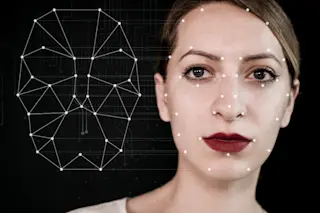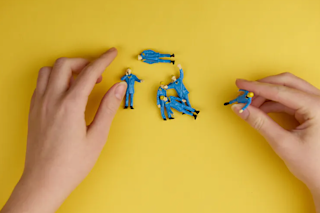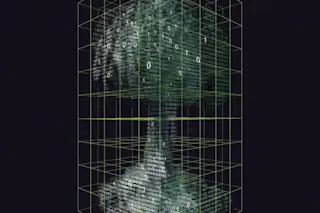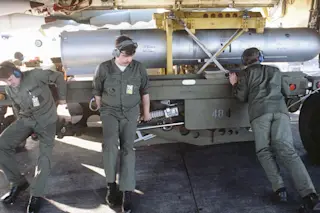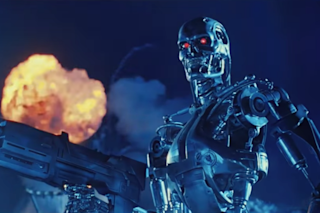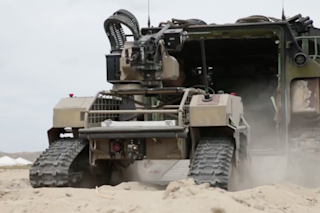On the morning of Thursday, August 10, 2006, Steven Lancaster woke to the breaking news of arrests: British terrorists had allegedly planned to explode up to 10 passenger planes bound for the United States over the mid-Atlantic using liquid bombs, hiding the components of each bomb inside their carry-on luggage. He knew immediately what he had to do. "I had my development team go out and get a bunch of liquids, and I said, 'OK, I need you to be able to tell one apart from all the others.'" Lancaster is a vice president of Guardian Technologies International, one of several companies working with the federal Transportation Security Laboratory (TSL), where new technologies that may improve airport security are tested against actual explosives and not just safe substitutes. Currently, the most serious security gap is the ease with which explosives—including liquid ones—can pass through airport checkpoints. Guardian is developing PinPoint, a software system that can analyze X-ray images of carry-on bags for telltale signatures of dangerous substances. By mid-August, the software could recognize seven types of solid explosives, but it had not yet been trained on liquids of any kind. Lancaster's team returned from the local Safeway with about a dozen bottles of innocuous liquids: water, Coke, Diet Coke, Neutrogena Hand Sanitizer, Gerber baby juices, and more. Guardian has dozens of ready-packed carry-ons in its testing lab, and for the rest of the day the team packed the bottles of liquid in among clothing, electronics, and cans of tennis balls, then ran them repeatedly through the lab's X-ray machine. At random, they picked Nestea Sweetened Iced Tea as their "target." By the following morning, Lancaster says, they had succeeded. Whenever the (admittedly harmless) Nestea went through the machine, PinPoint would highlight it on-screen with a big red box and display a message urging the operator to "Open Bag." Even Lipton iced tea did not trigger the same response. This past summer, the government's scramble to find technology that can identify specific liquids led many people to conclude that liquid bombs are a new threat. They are not. In 1987 a liquor bottle filled with liquid explosives, placed in a carry-on bag in an overhead bin, helped terrorists crash a South Korean airliner. All 115 on board died. In 1994 Al Qaeda member Ramzi Yousef, an architect of the first World Trade Center bombing, detonated liquid nitroglycerin that he had brought on board a Philippine Airlines flight in contact-lens solution bottles. The explosion killed one passenger and injured several others. This was just a test run for a much larger plan to explode a dozen U.S.-bound passenger jets over the Pacific, according to prosecutors. In 2002 the FBI issued a nationwide advisory that Al Qaeda had discussed sneaking liquid explosives disguised as coffee onto planes. This past March, NBC News leaked details of a classified investigation by the Government Accountability Office that showed homemade bomb-making materials sailing through security at all 21 airports tested. So what could make us safer? As Lancaster points out, "The technology to detect liquid explosives absolutely does exist today—it's called chemical analysis." For complete certainty, you could chemically test every single liquid carried aboard, which he estimates would take around 10 to 15 minutes per passenger. "You'd have to show up for your airplane 20 hours before it takes off," Lancaster says. The Department of Homeland Security (DHS) has been evaluating 10 new liquid-explosives detection technologies since the spring of 2006, yet these scan only one bottle at a time—and that bottle must be removed from its carry-on. That's not much of an improvement over current methods, in which security personnel swab suspicious objects one by one, then place the swabs in a machine to check for dangerous molecules. While methods may improve, the big picture is less than reassuring. With limited resources pitted against a seemingly limitless number of ways to produce terror, we will probably always be chasing a moving target. Shoe bomber Richard Reid boarded a Paris to Miami flight in 2001 wearing high-tops packed with explosives, and suddenly all passengers were putting their shoes through the X-ray machines. In the wake of this summer's scare in Britain, the DHS shifted its focus to finding better ways to detect liquid bombs or their components. It's clear that technology alone cannot solve the problem, and security experts consider the equipment at airport checkpoints to be the last line of defense. The British bomb plot was uncovered not by machinery, after all, but by old-fashioned intelligence work. Furthermore, if checkpoint security becomes too tight, terrorists may simply switch their strategy. Most of the 6 billion pounds of commercial cargo that fly with U.S. passengers each year is never checked for explosives, and airline personnel may also load explosives directly onto a plane. (One member of the recent plot was a Heathrow employee with extensive security clearance.) Terrorists equipped with surface-to-air missiles, like the ones fired at an Israeli-chartered Boeing 757 in Kenya in 2002, never need to pass through any security checkpoints. Still, screening technology is an inevitable, and necessary, component of the push back against terrorism. Here are some of the most sophisticated methods for detecting liquid explosives currently under development, and some of their limitations: PINPOINT IMAGE ANALYSIS There's more information buried in the pixels of an X-ray image than the human eye can see, says Steven Lancaster. So why rely on a checkpoint agent to decide if that's really suntan lotion in your bag? PinPoint is currently being tested against explosives at the TSL. The software piggybacks on X-ray machines currently in use but would itself cost around $50,000. Caveat: Not yet tested on liquid explosives or their precursors. TERAHERTZ IMAGING Long, penetrating terahertz waves (between microwaves and infrared on the electromagnetic spectrum) can see through packaging, plastic, shoes, and clothes, making concealed explosives stand out against an image of the naked body. That's not necessarily a good thing, according to outraged Heathrow passengers involved in a 2004 trial run of similar technology. British developer TeraView's CEO Don Arnone says it's possible to scramble the naked pictures so screeners can't see them, yet still have the computer detect an out-of-place object in your underwear. The technology can also identify some substances, liquids included, by the way they absorb terahertz waves. "Water, moisturizers, gasoline, and petroleum products have signatures," Arnone says, but there is "a whole class of liquids that don't," including acetone. Lancaster of Guardian scoffs that with terahertz "you can detect organics, but you can't tell the difference between an apple in one pocket and a ball of C4 [a plastic explosive] in the other." Each machine costs over $100,000; a shoe scanner is also close to commercialization. Caveat: Leather wallets confuse it, and modesty may foil it. NANONOSES So far, the best explosives detector is still a dog's nose. "But some days they're sick or tired," says bomb detection expert John Parmeter of Sandia National Laboratories. "Our technology is the only thing that rivals a dog in terms of sensitivity," chemist Timothy Swager of MIT claims. Aptly named Fido, this detector can even smell a vapor coming from a closed bottle. Here's how: Attached to a gentle vacuum cleaner is a tiny glass tube lined with a semiconducting polymer. In some versions of the technology, a shower of ultraviolet rays will cause the polymer to "lase," giving off a steady beam of light. But if explosives molecules bind to the polymer, the beam weakens. This warning signal gets amplified over 10,000 times, which accounts for the system's extraordinary sensitivity. While the detector is currently optimized for substances in the TNT family, "you can design chemistries that can detect most any explosive," Swager says, including liquids. Fido is currently deployed in Iraq sniffing for bombs, and its developer, Nomadics, estimates that a commercial unit will cost around $21,000. Caveat: Each new threat requires developing a new polymer. MICROCANTILEVERS In a way more like a nose than Fido, these detectors can distinguish between many different airborne molecules. Thomas Thundat, a nanoscientist at Oak Ridge National Laboratory, says the detectors contain an extremely sensitive array of "very miniature diving boards." Each diving board, or microcantilever, is just one micron thick and carries a different coating. When airborne molecules bind to the coating (each attracts a different kind of molecule), the surface tension changes, making the cantilever curl up like a piece of paper that's been wet on one side. The overall bending pattern indicates what chemicals are in the air. "We can detect everything—explosives, chemical agents, biological agents," Thundat says, including vapors as dilute as a few parts per trillion. "But selectivity is still a problem." Unrelated items can set off a detector's alarm, making checkpoint use impractical. Ultimately, Thundat hopes for a device similar to a handheld metal detector: something the size of a calculator that would scan passengers in 10 seconds or less, at the bargain price of under $1,000 per unit. Caveat: The technology has been in the research stage for more than 10 years. PUFFER MACHINES Already installed in 37 airports around the country, these walk-through portals aim brief gusts of air at passengers' clothing. The goal is to dislodge any particle remnants of the bomb-making process, including residue from liquid bombs, and carry them aloft to an ion-mobility spectrometer, where the amount of time it takes a molecule to move down a 10-centimeter electrically charged tube gives away its identity. Could a terrorist subvert this system with meticulously clean methods? "What do you think?" retorts nanonose developer Swager of MIT. Each trace-detection portal, as they are formally known, costs up to $160,000. Caveat: Closed bottles and sterile technique could conceal particles. While developers tend to champion their own technologies and criticize others, everyone agrees that a single type of detector won't do. "The ultimate sensor will have multiple technologies in it," says Swager. Still, "the most important thing we have in terms of finding terrorists are the people," he adds. "Savvy, well-trained, alert people—there's no substitute. We can't let ourselves get sucked into the idea that we can 'technology' our way out of this."
The Truth About Liquid Bombs
Promising new technologies could sniff out liquid bombs. But can their limitations be overcome?
More on Discover
Stay Curious
SubscribeTo The Magazine
Save up to 40% off the cover price when you subscribe to Discover magazine.
Subscribe


